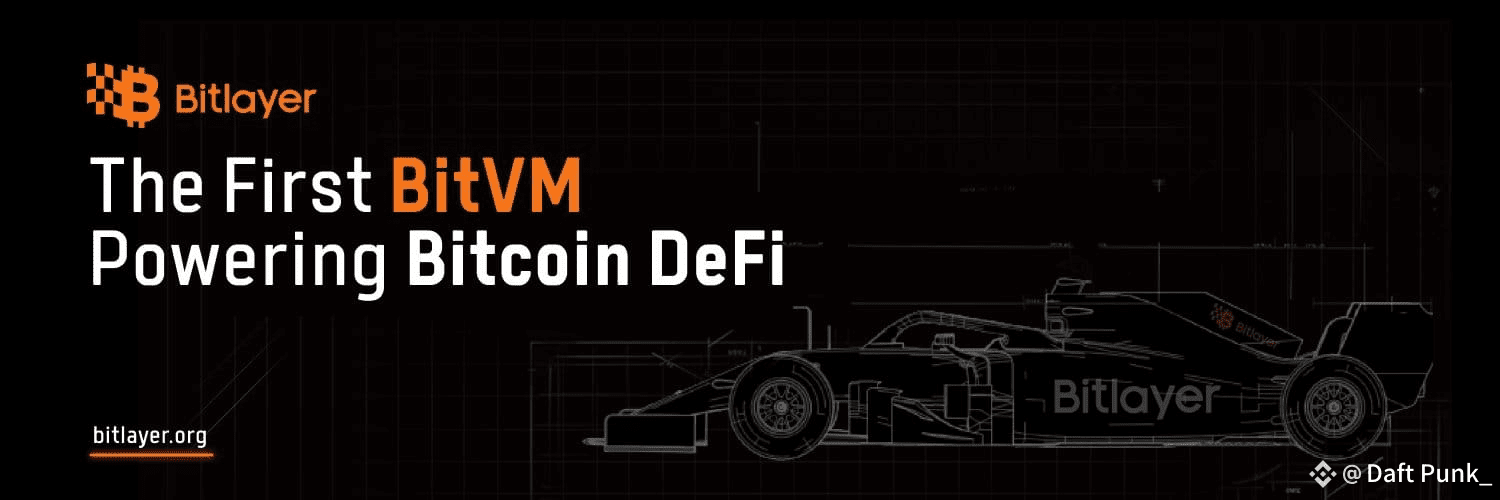 As the first Layer 2 solution based on the security of Bitcoin consensus and fully compatible with the Ethereum Virtual Machine, Bitlayer achieves a leap in programmability and scalability of the Bitcoin network through its innovative Bitcoin Virtual Machine architecture. This article will deeply analyze Bitlayer's core value and industry significance from the perspectives of technical principles, security mechanisms, ecological potential, and competitive landscape.
As the first Layer 2 solution based on the security of Bitcoin consensus and fully compatible with the Ethereum Virtual Machine, Bitlayer achieves a leap in programmability and scalability of the Bitcoin network through its innovative Bitcoin Virtual Machine architecture. This article will deeply analyze Bitlayer's core value and industry significance from the perspectives of technical principles, security mechanisms, ecological potential, and competitive landscape.
#### 1 Technical Architecture: The Fusion of BVM and Bitcoin Security
The core innovation of Bitlayer lies in its Bitcoin Virtual Machine design. The BVM is a verification layer based on zero-knowledge proofs, allowing all EVM transactions to complete final verification on the Bitcoin mainnet by converting the EVM instruction set into a ZK-friendly format. Its key technological breakthroughs include:
- **Inheritance of Bitcoin Consensus Layer Security**: By using Bitcoin scripts and Taproot technology, the Layer 2 state root is submitted to the Bitcoin mainnet, ensuring data availability and resistance to censorship
- **Complete EVM Compatibility**: Supports seamless migration of Solidity smart contracts, developer toolchains, and all Ethereum-native dApps, significantly lowering the development threshold
- **Optimal Rollup Solutions**: Adopts ZK-Rollup architecture, optimizing proof generation algorithms to increase TPS to over 5000, while keeping transaction costs below one percent of the Bitcoin mainnet
#### 2 Security: Trust Model Empowered by the Bitcoin Mainnet
The security of Bitlayer does not rely on additional assumptions but is directly anchored to Bitcoin's hash power:
- **State Verification Mechanism**: Users can verify ZK proofs on the Bitcoin chain to ensure the correctness of Layer 2 state transitions
- **Emergency Withdrawal Channel**: In case of malicious actions, users can trigger the challenge period protocol of the Bitcoin mainnet to withdraw assets directly through Bitcoin transactions
- **Decentralized Sequencer**: Initially, the sequencer nodes are managed by the foundation, but the roadmap clearly indicates a transition to a PoS staking governance model to avoid single points of failure
#### 3 Ecological Potential: Reconstructing the Financial Paradigm of Bitcoin
Bitlayer activates the Bitcoin ecosystem's DeFi, NFT, and RWA scenarios through EVM composability:
- **Native Asset Empowerment**: Supports BTC and BRC-20 assets to directly participate in lending, DEX trading, and derivatives issuance
- **Cross-Chain Interoperability**: Bridges to the Bitcoin mainnet through light clients and plans to integrate interoperability protocols for multi-chain asset movement
- **Developer Incentives**: Establish a $50 million ecosystem fund to attract mature Ethereum dApps to migrate and foster native Bitcoin innovation projects
#### 4 Competitive Landscape: Differentiation from Other Bitcoin Layer2 Solutions
Compared to RSK, Stacks, Lightning, and other solutions, Bitlayer's differentiated advantages are:
- **Full EVM Support**: Unlike the limitations of Stacks' Clarity language or Lightning's payment channel, Bitlayer offers Turing-complete smart contract capabilities
- **Lower Migration Costs**: Unlike RSK, which requires learning a variant of Solidity, Bitlayer is fully compatible with the Ethereum toolchain
- **Advantages of ZK Proofs**: Compared to sidechain solutions, Bitlayer ensures asset security through ZK proofs rather than relying on a federated model
#### 5 Challenges and Risks
- **Bitcoin Mainnet Limitations**: The complexity of Taproot scripts may restrict verification efficiency, necessitating continuous optimization of proof generation costs
- **Cross-Chain Bridge Security**: Centralized bridges pose risks in the early stages and need to achieve decentralized verification as soon as possible
- **Ecosystem Cold Start**: Needs to break through the dual competition of Ethereum Layer 2 and Bitcoin's native ecosystem
#### 6 Conclusion: The Strategic Significance of Bitlayer
Bitlayer not only addresses the core pain points of Bitcoin programmability but also integrates the Bitcoin ecosystem into a multi-chain future through EVM compatibility. If its ZK technology and decentralized governance progress as planned, it is expected to become the infrastructure layer for Bitcoin DeFi, reshaping the utility of Bitcoin assets valued at over a trillion dollars.
References
1. Bitlayer Whitepaper v1.2 (2024)
2. Bitcoin Improvement Proposals: BIP-340 (Schnorr Signatures)
3. Ethereum Foundation: ZK-Rollup Research (2023)
4. CoinMetrics: Bitcoin Layer2 Adoption Report (2024)

